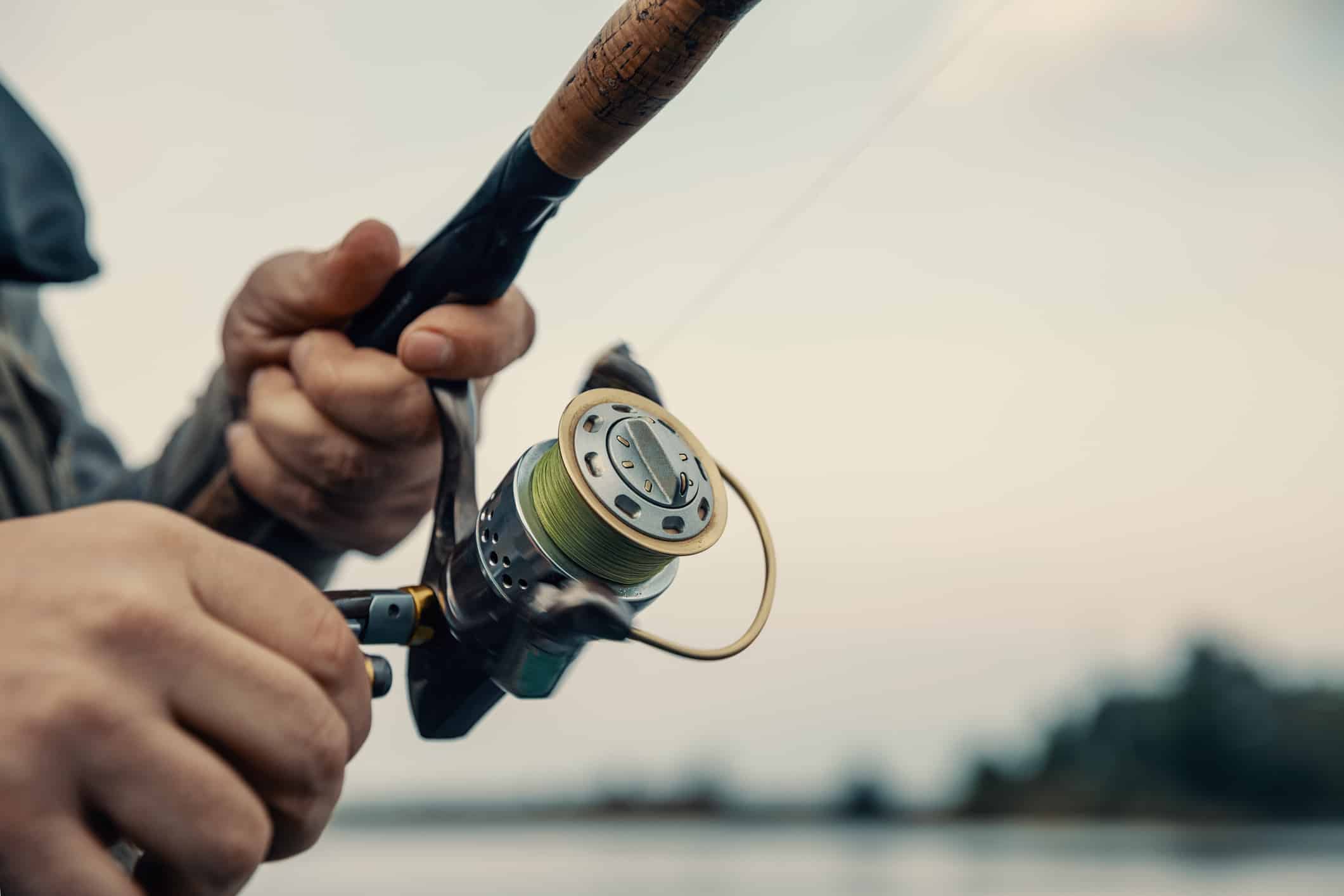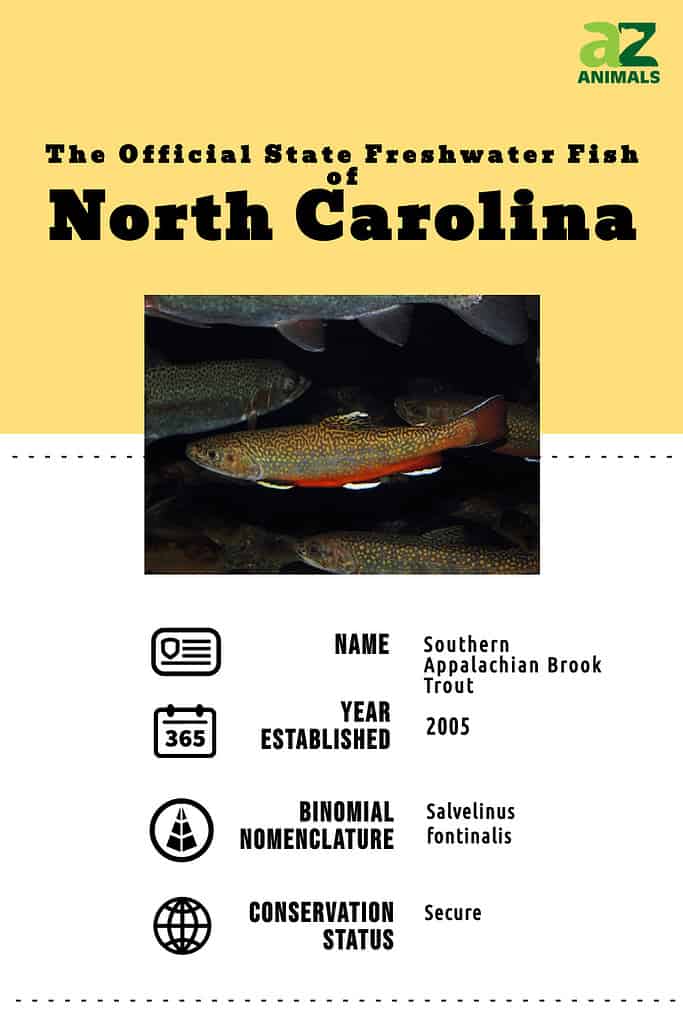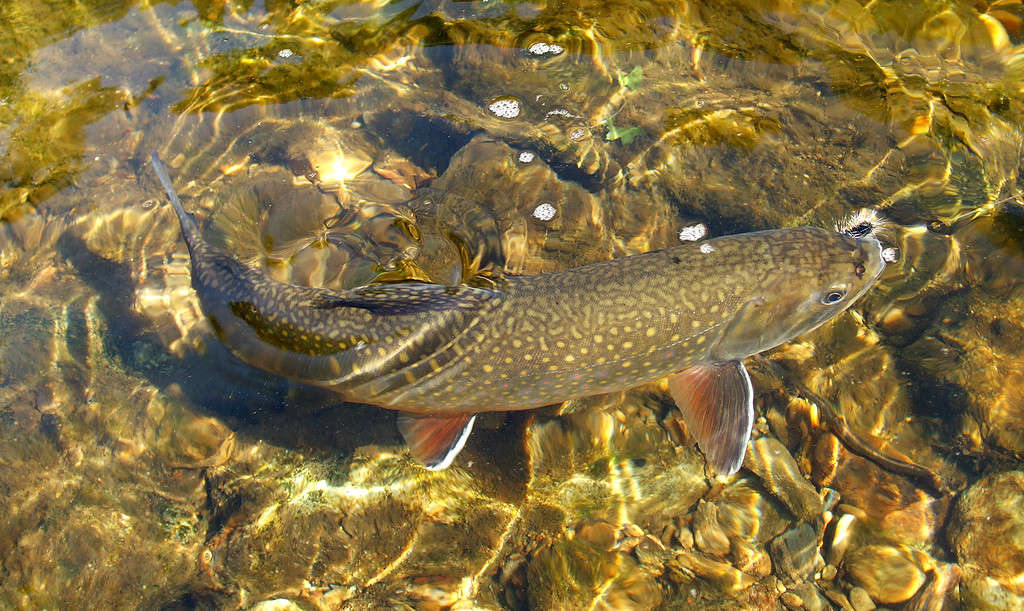North Carolina is a southeastern state in the United States, bordered by Virginia to the north, Tennessee to the west, Georgia to the south, and South Carolina to the southeast. It has a diverse geography that includes mountains in the western part of the state and coastal plains on its eastern shore. The capital city is Raleigh, but other major cities include Charlotte and Greensboro.
North Carolina is known for its beautiful beaches along its Atlantic coastline, including popular vacation spots like the Outer Banks and Wilmington. Visitors can also explore national parks such as the Great Smoky Mountains National Park or enjoy outdoor activities like hiking, fishing, or boating at one of many lakes across the state.
State Saltwater Fish

The official state saltwater fish of North Carolina is the red drum, also known as channel bass or spottail bass. The scientific name for the channel bass is Sciaenops ocellatus. It has a distinct appearance that sets it apart from other fish in the region. The red drum has a bronze-red color on its back and a silver-white underside with one or more black spots at the base of its tail. Its body is elongated and slender, measuring up to 60 inches in length and weighing anywhere between 40-90 pounds.
The channel bass’s scales are large and shiny, making it an attractive catch for fishermen who come to North Carolina’s coastal waters during summer months when these fish are most commonly found. These fish have been known to live for over thirty years, providing ample opportunity for anglers to catch them throughout their lifespan.
Aside from being popular among fishermen, the red drum plays an important role in maintaining balance within North Carolina’s marine ecosystem. They serve as prey for larger predators, such as sharks, while controlling populations of smaller organisms like crabs and shrimp that they feed on.
If you’re interested in spotting this iconic species during your visit to North Carolina this summer, head out towards shallow coastal waters, where they can be found swimming near shorelines or around oyster reefs during high tide periods. Be sure to obtain any required licenses before fishing or engaging in any activities related to these creatures so that you can enjoy their beauty without causing harm to their natural habitat!
State Fish of North Carolina: Can You Catch Them?

If you want to catch red drum, you have to have your fishing license and follow the catch requirements.
©iStock.com/smiltena
If you’re planning on fishing for red drum in North Carolina this summer, it’s important to make sure that you are doing so legally. In order to fish for red drum in the state, a valid North Carolina fishing license is required. Additionally, there are specific catch requirements that must be followed, and the fish must be caught within 0 to 3 miles of the North Carolina shoreline.
According to the North Carolina Wildlife Resources Commission, recreational anglers are allowed to keep one red drum per day with a slot limit of 18-27 inches. Any fish caught outside of this size range must be immediately released back into the water unharmed. It’s also important to note that commercial harvest of red drum is prohibited in North Carolina waters.
So if you’re looking forward to catching some red drum this summer, make sure you have your fishing license and follow these catch requirements closely. And as always, when fishing, practice responsible angling techniques such as proper handling and release methods for any fish caught, and respect all rules and regulations set forth by local authorities.
State Freshwater Fish

The Southern Appalachian brook trout is the official freshwater fish of North Carolina. Also known as the speckled trout or “brookie,” it is a beautiful fish with a distinctive appearance. They are typically small in size, ranging from 6-12 inches in length and weighing up to 2 pounds. Their body shape is streamlined and slender, with an elongated snout and large eyes that allow them to see well in their clear mountain streams.
One of the most striking features of the Southern Appalachian brook trout is its coloration. They have a deep greenish-blue back that fades into lighter shades towards their belly. This coloring is accented by numerous red spots on their sides, which are surrounded by blue halos. The fins of this fish are also noteworthy – they have white leading edges with black spots that stand out against their vibrant colors.
Overall, the Southern Appalachian brook trout’s appearance perfectly complements its natural environment – these beautiful fish can be found swimming gracefully through cool mountain streams throughout North Carolina during the summer months.
Brook Trout: Can You Catch Them?

Brook trout populations face threats from habitat loss, climate change, and non-native species, so catch-and-release helps protect this species.
©Dec Hogan/Shutterstock.com
If you are planning to fish for Southern Appalachian brook trout in North Carolina, it is important to know the state’s fishing regulations and requirements. The North Carolina Wildlife Resources Commission manages the state’s fisheries and sets rules that protect species like brook trout from overfishing.
To legally fish for Southern Appalachian brook trout in North Carolina, you must have a valid fishing license issued by the state. Additionally, there may be specific regulations regarding size limits or catch-and-release requirements for this particular species of trout.
It is also essential to recognize that Southern Appalachian brook trout populations face threats from habitat loss, climate change, and non-native species. As such, anglers should take care when handling these sensitive fish and follow guidelines for responsible angling practices. For this reason, most anglers use catch-and-release methods to help protect this species.
Whether you are an experienced angler or looking to try your hand at fly-fishing for the first time, exploring North Carolina’s streams and rivers can offer unforgettable experiences. With proper knowledge of local regulations and environmental concerns surrounding Southern Appalachian brook trout populations, visitors can enjoy sustainable fishing opportunities while protecting these majestic creatures’ habitats.
Channel Bass: Where to Spot

Channel bass prefer warm waters with sandy or muddy bottoms and is commonly found along the coast of North Carolina.
©iStock.com/campbellphotostudio
If you’re looking to spot a channel bass (Sciaenops ocellatus) in North Carolina, there are several areas where you may have some luck. The fish is commonly found along the coast of North Carolina, particularly in shallow waters and estuaries. Some popular spots for fishing or observing channel bass include the Cape Fear River, Pamlico Sound, Bogue Inlet Pier, and the Neuse River.
In terms of habitat, channel bass prefer warm waters with sandy or muddy bottoms. They tend to congregate near structures like rocks or submerged logs and can often be found hiding out in tidal pools during low tide. Juvenile channel bass tend to stay closer to shore, while adult fish may venture further out into open water.
While they were once heavily overfished in North Carolina due to their popularity as a food source, conservation efforts have led to an increase in population numbers in recent years. If you’re lucky enough to catch a glimpse of one of these impressive fish this summer, remember that they are now protected under state law, so the guidelines are strict. It may be best to practice catch-and-release methods if you do decide to go fishing.
Brook Trout: Where to Spot

Southern Appalachian Brook Trout prefer cold, clear mountain streams.
©iStock.com/Coast-to-Coast
If you’re looking to spot a Southern Appalachian Brook Trout in North Carolina, there are several locations where this beautiful fish can be found. One of the best places to start your search is along the Blue Ridge Parkway, particularly in streams and creeks that flow through Pisgah National Forest. Other good options include Linville Gorge Wilderness Area and Great Smoky Mountains National Park.
As for their habitat, Southern Appalachian Brook Trout prefer cold, clear mountain streams with plenty of cover in the form of rocks and fallen trees. They also require high levels of dissolved oxygen in the water to survive. In fact, they’re often used as an indicator species for stream health because they’re so sensitive to changes in water quality.
If you’re lucky enough to spot one (they can be quite elusive), keep in mind that these trout are considered a threatened species due to habitat loss and competition from non-native fish like rainbow trout. So if you do plan on fishing for them or handling them at all, make sure you follow all regulations and guidelines set forth by wildlife agencies to help protect these important members of North Carolina’s ecosystem.
The photo featured at the top of this post is © IrinaK/Shutterstock.com
Thank you for reading! Have some feedback for us? Contact the AZ Animals editorial team.






